In my long quest for better sleep, I’ve been measuring my sleep quality religiously night after night. I’ve tested many home remedies and sleep products proclaiming benefits for better sleep, and though I’ve found some solutions that have improved my sleep moderately over time, I haven’t found anything that has made as big an impact as changing my pillow.
In this study, I slept on five different pillows that show up on various “best pillow” lists, and I measured the empirical quality of my sleep. This resulted in the biggest sleep improvement I’ve seen to date.
How I Tested
Using a sleep tracker, I measured my sleep quality sleeping on five different pillows for multiple nights per pillow and averaged the scores across the nights. I also compared against the pillow I’ve been sleeping on until now.
I kept my caffeine intake and activity levels consistent across all days. I started my bedtime wind-down at midnight and entered bed between 12:30am and 1am each night. I woke up with my alarm at 8:30am every morning.
Sleep quality is measured based on the amount of sleep in each sleep stage. Time in REM (Rapid Eye Motion) sleep and deep sleep contributes to a higher sleep score while time awake lowers the sleep score. The full details behind the sleep score can be found here.
Results
Winner: Saybrook Pillow
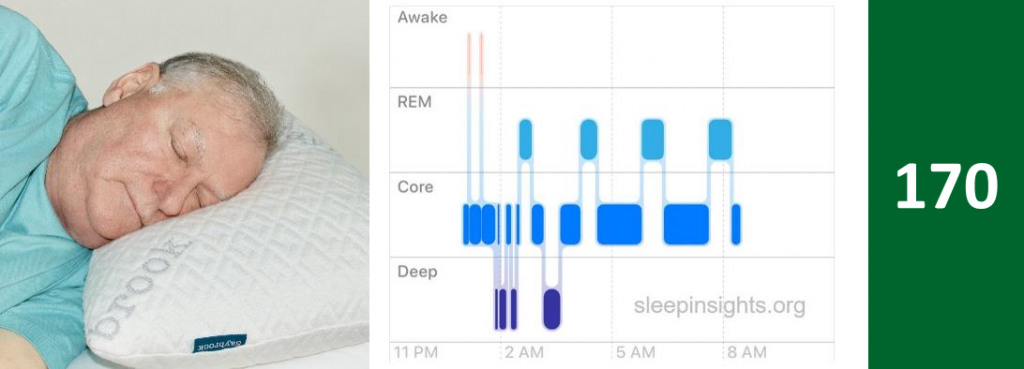
- Very comfortable filling material
- Love that the amount of filling inside can be adjusted
The Saybrook pillow is an adjustable pillow. By removing filling until I got a comfortable pillow height, I was able to sleep more soundly. You can see that I spent much more time in REM and deep sleep on this pillow. I also only woke up twice very briefly on this night and other nights I tested this pillow. With the other pillows, I woke up many times throughout the night. The pillow was also very comfortable with a sink-in memory foam that cradled my head.
Tempurpedic Pillow
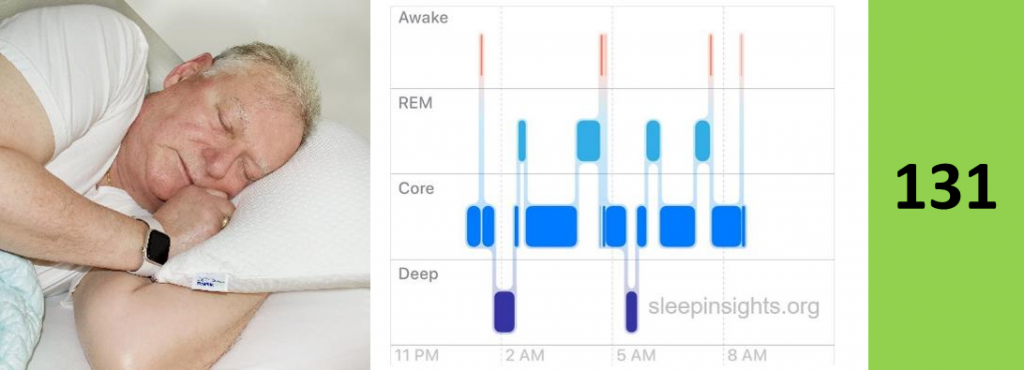
- Comfortable memory foam
- Had to fold in half to get support because it was too thin
In the chart above, you can see that my REM sleep was interrupted twice when I woke up at the end of the cycle. The Tempurpedic pillow was just too thin, so I must have tossed and turned several times in the night. At some points, I was squeezing it and folding it to make it thicker.
Purple Pillow
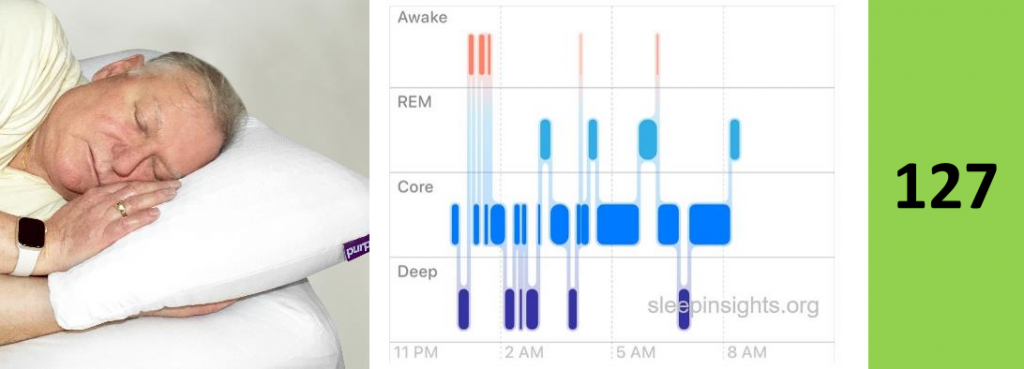
- Made my shoulders sore
- Bouncy material
I got a decent amount of deep sleep on the Purple pillow, but it still scored lower than the Saybrook and Tempurpedic pillows when taking into account the REM sleep and the number of times I woke up throughout the night. I didn’t feel great when I woke up on this pillow.
Old Pillow (Control)
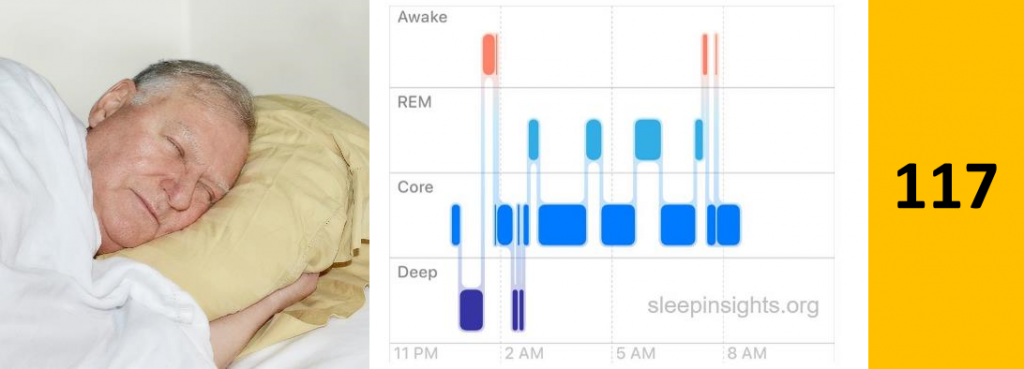
- I’ve had this pillow forever
- There was nothing wrong with it, but it definitely felt middle-of-the-pack
After many years, this pillow still performed better than some of the other new pillows I tried. I couldn’t tell you where I got it, but it’s a decent fluffy pillow. It was time to upgrade, but at least I know from the data that I wouldn’t upgrade to either of the pillows below that performed worse.
MyPillow
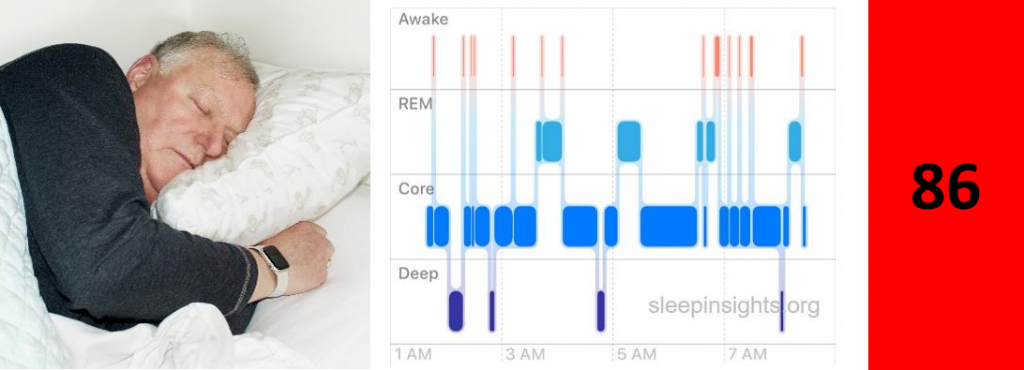
- Had to scrunch up the filling inside to get support
- Lumpy material
This pillow was both lumpy and bouncy. I woke up so many times throughout the night, as you can see in the sleep chart above. I imagine the ups and downs on the chart mimic my head bouncing back and forth on the pillow.
Pillow Cube
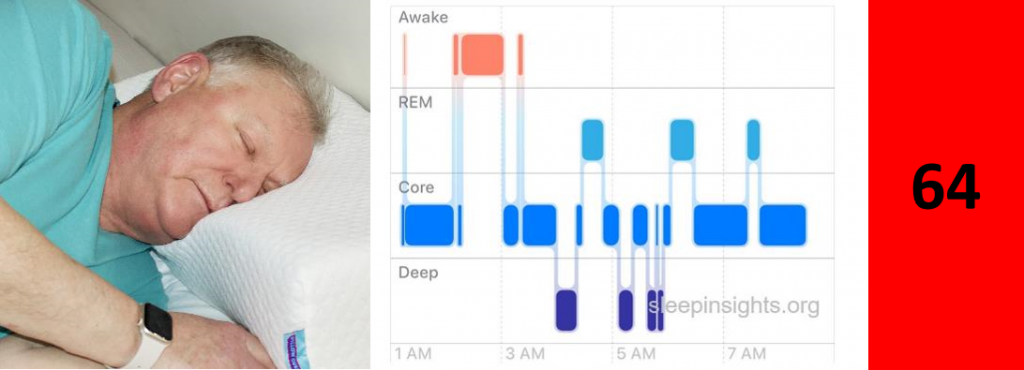
- Gave me neck pain
- I sank straight into the pillow, and my nose felt suffocated
I can vividly remember being awake in the night trying to fall asleep on this pillow on separate occasions for multiple nights. The Awake time really brings down the score for this pillow. It’s just not for me.
The Saybrook pillow resulted in the highest sleep score of 170 compared to a control of 117. The Tempurpedic and Purple pillows also resulted in a higher sleep score than the control, though the MyPillow and Pillow Cube performed worse on the sleep score.
My average time in REM sleep on the Saybrook pillow was 119 minutes compared to an average time in REM sleep on the other pillows of 81 minutes, a 47% increase
The Saybrook pilllow decreased my time awake and increased my time in REM sleep. My average time awake on the Saybrook pillow was only 2 minutes per night, while my average time awake on other pillows was 27 minutes. My average time in REM sleep on the Saybrook pillow was 119 minutes compared to an average time in REM sleep on the other pillows of 81 minutes, a 47% increase. Both of these differences exceeded two standard deviations of improvement. The results are statistically significant.
Show Full Data
| Trial | Awake (Mins) | REM (Mins) | Core (Mins) | Deep (Mins) |
|---|---|---|---|---|
| Saybrook | 2 | 120 | 276 | 51 |
| Saybrook | 2 | 117 | 288 | 56 |
| Tempurpedic | 15 | 89 | 264 | 51 |
| Tempurpedic | 11 | 96 | 293 | 51 |
| Purple | 23 | 75 | 288 | 83 |
| Purple | 8 | 92 | 255 | 35 |
| MyPillow | 20 | 80 | 278 | 31 |
| MyPillow | 44 | 82 | 244 | 42 |
| Pillow Cube | 38 | 62 | 201 | 46 |
| Pillow Cube | 56 | 61 | 268 | 52 |
| Old Pillow | 30 | 95 | 289 | 52 |
Discussion
I didn’t expect such a noticeable improvement in my sleep from changing the pillow, especially compared to all the other home remedies and sleep products I’ve tried. The Saybrook pillow improved my sleep the most. I spent more time dreaming and less time awake on the Saybrook pillow. I had a few lucid dreams while sleeping on the Saybrook pillow, and I suspect the quality of my REM sleep was higher.
For some of the other pillows, I would have trouble falling asleep because the pillow was either too tall or too flat. The Saybrook pillow can be adjusted by removing filling or increasing the amount of filling in the pillow, which allowed me to make the pillow the exact height I wanted. If you want to give this a try, I highly recommend adjusting your pillow as well to see if it helps.
I’m pleased with these results and have found a new forever pillow. However, I will continue on my journey for finding better sleep by testing even more home remedies and sleep products.

David Stewart
David is a former statistics consultant.

